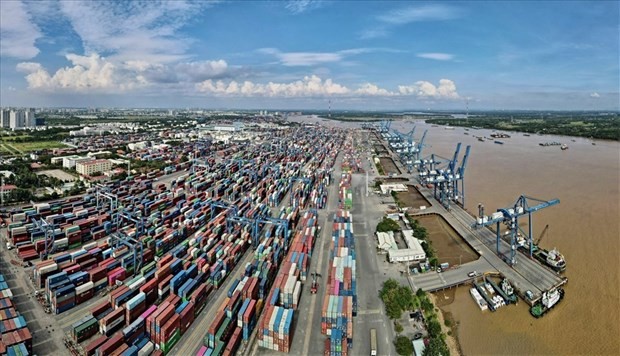 |
Cat Lai port in Ho Chi Minh City (Photo: laodong.vn) |
The city’s Transport Department has proposed the municipal People’s Committee to develop the project.
Under the proposal, the terminal will be located at the mouth of the Cai Mep - Thi Vai River, in Ganh Rai Bay, near international shipping routes passing through the East Sea, between regions with great growth potential in Asia.
In addition, the port is adjacent to the Vung Tau - Thi Vai navigation route, which is considered the best in Vietnam today as it can accommodate vessels with a tonnage of up to 232,494 tonnes (24,000 TEU).
The port’s location is considered to have competitive advantages that can help attract international sources of goods from countries such as Cambodia, Thailand, Brunei, the Philippines, and the southern part of China.
Currently, goods from those countries are mainly transshipped via Singapore or Malaysia. If transhipped via the Can Gio terminal, the goods’ journey is reduced by about 30% - 70% compared to the distance transported to Singapore.
Regarding the volume of cargo through the port, it is forecast that the proportion of transshipped container goods will reach 28 percent - 30 percent of the total volume of global container transport, equivalent to 274 - 293 million TEUs by 2025. In particular, nearly 60 percent of the volume of global container shipping is through the East Sea.
Ports in Southeast Asia will account for about 30 percent of the transshipment volume, equivalent to 82-88 million TEUs by 2025. The capacity of Southeast Asia's international transshipment ports is currently nearly 53.6 million TEUs. So, new ports will still have the opportunity to attract 28.4 - 34.4 million TEU of transshipment goods.
In particular, the investment commitment from the Mediterranean Shipping Company (MSC), the world’s largest container shipping firm, will ensure cargo for the Can Gio terminal. The volume of cargo through the Can Gio international transshipment port is forecast to be 4.8 million TEU by 2030, and 16.9 million TEU by 2047.
Can Gio international transit terminal is said to not affect or compete with Cai Mep - Thi Vai port in Ba Ria - Vung Tau Province. The volume of international transshipment at the port is very small, less than 5 percent, and mainly from Cambodia. Cai Mep-Thi Vai port cannot receive vessels with a capacity of over 10,000 TEU while the Can Gio terminal is built to mainly serve transshipment goods.
Economic expert Tran Du Lich, a member of the Government's Advisory Group, said that the Can Gio terminal project has favorable conditions for implementation, particularly in terms of location and investors.
It’s not a matter if it’s necessary to build the terminal but the matter now is how to deploy it as quickly as possible so as not to miss the opportunity, Lich said.
He suggested the Southeast Coordination Committee needs to join hands to speed up the project concertedly.
The project proposal is expected to be reported to the Ministry of Transport and submitted to the Prime Minister in May 2024. If approved, it is divided into seven implementation phases with the first expected to be completed in 2027 and the last, in 2045.
























